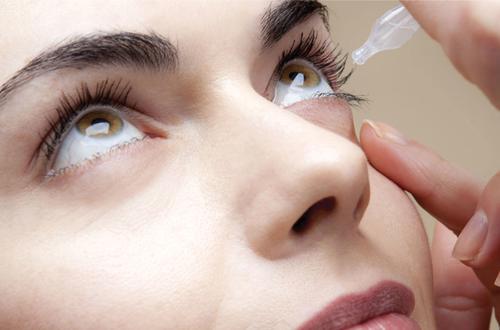Best Eye Drops for Dry Eyes
Tears are made of oil, water, and mucin produced by different glands near or on the eye. When there is a problem in the production of any of these components, you suffer from dry eye disease. Also known as dry eye syndrome, this is a condition where your eye does not produce enough or good quality tears.
Dry Eye Disease Based on Manifestations
Medically, dry eye disease is described based on three major manifestations:
1. Keratoconjunctivitis Sicca
This is dry eye syndrome affecting the cornea and the conjunctiva of the eye.
2. Keratitis Sicca
Inflammation of the eye can often be secondary to dryness. When this happens, the condition is called keratitis sicca.
3. Dysfunctional Tear Syndrome
Sometimes, the tear glands may be producing sufficient amount of tears, though with low quality. This can also contribute to eye dryness.
Symptoms
Irrespective of the causes, the symptoms are always the same and include:
- A burning sensation and itchiness that may make you feel like rubbing your eyes.
- Soreness and redness.
- Excess rubbing of your eyes may blur your vision and cause your eyes to feel fatigued and heavy.
- Sensitivity to light. Do you always experience any of the aforementioned symptoms? If so, then you should consider using dry eye drops.

What Are the Best Eye Drops for Eyes?
Eye drops are liquid or fluid medical formulations applied directly to the eyeball to manage certain eye conditions. The use of eye drops depends on the cause of dry eye syndrome you are experiencing. In this regard, there are a variety of eye drop medications to consider when managing symptoms of dry eye disease. Although most of these medications are available over the counter, you should always consult a professional for instructions on when and how to use them. They can also inform you of the best eye drops for dry eyes. The following are the most commonly used dry eye drops:
1. Artificial Tears
These are the most commonly used eye drops. Several brands are available over the counter, and you may need to try a variety of brands before finding the best option for your eyes. Artificial tears are lubricant treatments that replace the water component of tears when it is produced in inadequate amounts. There are two forms of artificial tears: preservative-free drops and drops with preservatives.
Preservatives are often added to eye drops to prevent the growth of bacteria inside the container or bottle with the medication. One downside of preservatives is that they may potentiate eye damage and inflammation with prolonged use. On the other hand, preservative free dry eye drops should be considered for use especially when you are wearing contact lenses. Preservatives have been proven to damage the eye by clogging contact lenses.
2. Cyclosporine
Cyclosporine suppresses the immune system and is available for use with dry eye syndrome. It is not available over the counter without a formal prescription. Your doctor will prescribe cyclosporine if your dry eye syndrome is not responding to lubricants. Always ensure that you use cyclosporine based on the instructions from a hospital-based specialist.
3. Corticosteroids
Inflammation is the major symptom of dry eye disease. Corticosteroids are powerful medications used to manage inflammation. They are available in the form of eye drops or ointments. Though they may be the best option in severe cases, they cause cataracts and increased eye pressure in about one in every three patients who use them. Treatment by corticosteroids always requires a follow up. Therefore, do not use corticosteroids if you have no clinic appointments for follow-up.
4. Serum Eye Drops
Serum eye drops are made from blood components. They are rarely used except in cases where other medications have failed to work. They always take time to prepare and a lot of regulations also surround their production. Several quality standards are also involved in their formation, making them one of the most expensive dry eye drops available.
How to Prevent Dry Eye Syndrome
1. Keep Your Body Hydrated at All Times
Water is essential for every part of the body. It is advisable to consume 8 to 10 glasses of water per day. When your body is well hydrated, your eyes will be hydrated, as well. Moreover, it is expedient to routinely drink water before feeling thirsty to minimize dehydration. Besides plain water, you can also eat fruits rich in water, such as cucumbers and watermelons.
2. Eat More Omega-3 Fatty Acids
Natural and healthy oil is important in managing dry eye syndrome. It augments the ability of the oil-making glands in the eye to produce quality tears. Fish such as tuna, salmon, trout, mackerel, and sardines are rich sources of omega-3 fatty acids.
3. Eyelid Massage
A gentle massage to the eyes causes oil to melt from tear glands and spread in the eye. This process may be irritating at first, but this effect wears off soon enough.
4. Avoid Places with a Lot of Air Movement
A lot of air blowing into your eyes may dry tears from your eyes and cause irritation. You can choose to stay indoors, use a humidifier, or install air cleaners to help reduce the particles in the air that can irritate your eyes.
Final Thoughts
Dry eye disease is quite common and can affect anyone. If you experience any signs and symptoms of dry eye syndrome, consider using eye drops for dry eyes to manage your condition. Better still, you can always consult your optometrist or doctor if you experience any complications. Check out the video below for more information about eye drops.
